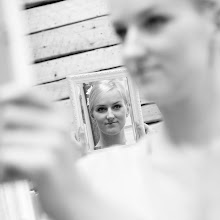Artists, scientists, scholars and researchers that present innovative discourse on the convergence of art, science and technology - MIT Press publishes their texts and has published a book called Virtual Art: from Illusion to Immersion, written by Oliver Grau. Computer graphics, video, interactive art, animations, Internet art, sound installations, digital poetry are some disciplines of the genre called media art or new media art. With the tools available today dazzling illusions and feeling of immersion can be produced.
Interactive media has given new dimensions to the idea of an image; what looks like an image on the first glimpse may give a "multisensory interactive experience with a time frame." It is often complicated to make difference between the original and an illusion of it while the time and room parameters are subject to manipulations. The latter makes the environments excellent for experiences and simulations. (Grau, 7)
Using new design and technological capabilities, virtual reality can be composed with unique feeling of time and space, producing the illusion of really being in another place at another time, being immersed. I agree with Grau that virtual art is not always directed to being illusional, nevertheless it does "operate within the energy field of illusion and immersion - the paradigm of this medium" (Grau, 9).
The goal of virtual artist is to achieve for the viewer the strongest possible feeling of being in the picture. The picture the artist has created with strong cognition of reality bounded together with illusion. For example the illusion of changing distances between the objects is a technical solution that works as an immersive effect thanks to human imagination. To maximize the experience multiple human information channels can be manipulated through sound, odour, movement, change in temperature and many more.
The world of design and virtual reality is delightful. Simply looking at some photos of virtual art projects brings sensuous pleasure. For example an interactive virtual-reality project Osmose (1995) by a Canadian artist Char Davies. Osmose combines 3D computer graphics and interactive 3D sound, a head-mounted display and real-time motion tracking based on breathing and balance.
Oliver Grau gives more facsinating examples of the image development through the history. I go on exploring his writing and the various aspects of design on behalf of illusions and virtual world.
Interactive media has given new dimensions to the idea of an image; what looks like an image on the first glimpse may give a "multisensory interactive experience with a time frame." It is often complicated to make difference between the original and an illusion of it while the time and room parameters are subject to manipulations. The latter makes the environments excellent for experiences and simulations. (Grau, 7)
Using new design and technological capabilities, virtual reality can be composed with unique feeling of time and space, producing the illusion of really being in another place at another time, being immersed. I agree with Grau that virtual art is not always directed to being illusional, nevertheless it does "operate within the energy field of illusion and immersion - the paradigm of this medium" (Grau, 9).
The goal of virtual artist is to achieve for the viewer the strongest possible feeling of being in the picture. The picture the artist has created with strong cognition of reality bounded together with illusion. For example the illusion of changing distances between the objects is a technical solution that works as an immersive effect thanks to human imagination. To maximize the experience multiple human information channels can be manipulated through sound, odour, movement, change in temperature and many more.
The world of design and virtual reality is delightful. Simply looking at some photos of virtual art projects brings sensuous pleasure. For example an interactive virtual-reality project Osmose (1995) by a Canadian artist Char Davies. Osmose combines 3D computer graphics and interactive 3D sound, a head-mounted display and real-time motion tracking based on breathing and balance.
Oliver Grau gives more facsinating examples of the image development through the history. I go on exploring his writing and the various aspects of design on behalf of illusions and virtual world.

No comments:
Post a Comment